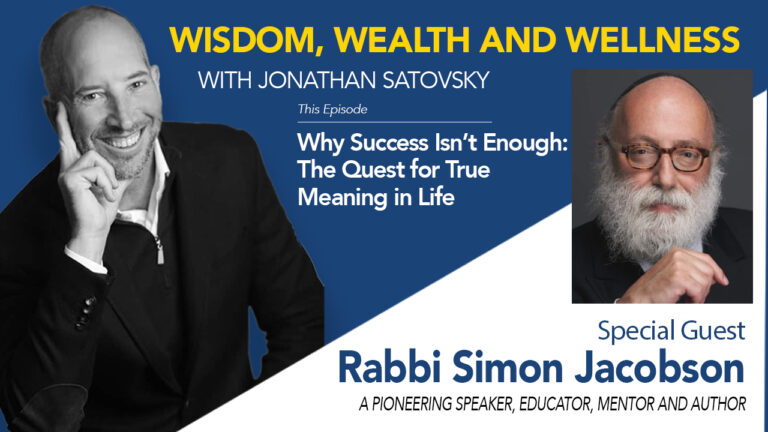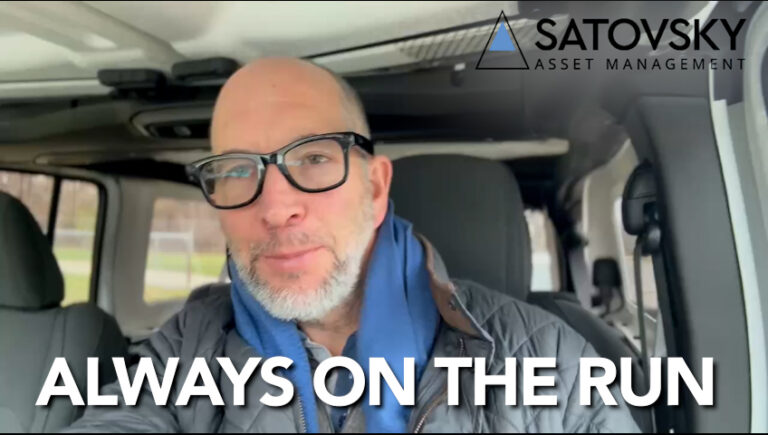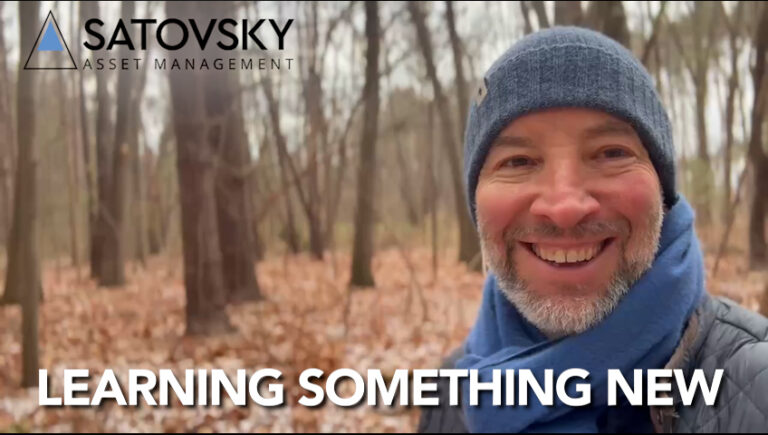Is Freedom Free? Solving The Equation

This commentary is an excerpt from our Q2 2021 Market Report, which also features world capital market performance along with the returns of stock and bond asset classes in the US and international markets during Q2 2021. Download the full report here.
As we talk with clients during the summer months, most are enjoying their summer vacations and/or time with family & friends. A welcome change from this time last year when we were stuck in lock-down and subject to social distancing rules. This past year has made us think a lot about freedom, which people around the country are starting to enjoy once again, and perhaps something we all previously took for granted.
While freedom comes in many forms, the freedom we emphasize at SAM is that of Financial Freedom. As history has proven time and time again, freedom has a cost, and so does Financial Freedom. However, freedom also has many benefits, as does Financial Freedom.
Though the United States is the wealthiest economy in the world, most people still search for Financial Freedom. The following formula is how we believe you can achieve it:
Time x (Discipline)^2 = Financial Freedom
We will explore this formula in more detail throughout this passage.
Independence Takes Time
Earlier this summer, we Americans celebrated America’s independence from Great Britain, which occurred on July 4th, 1776. This marks the day the US Congress adopted the Declaration of Independence. There were a culmination of events that lasted decades which led to that day, the first being The French and Indian War in 1754. When you consider the first British settlement in America took place in 1607 in Jamestown, Virginia, you can see it took 169 years for the US to declare its independence, post 22 years of various wars and acts.
Our Founding Fathers had a strong sense of delayed gratification knowing that freedom takes time. This also rings true when creating the foundation for one’s Financial Freedom. As we have written about in blogs in the past, time is your number one friend in compounding wealth.
Discipline-Squared
The luxury of time is meaningless if you don’t act on this cherished time with disciplined habits that create your Financial Freedom. To start, it’s helpful to begin with the end in mind, asking yourself, “what does Financial Freedom mean to me?” The answer typically varies from person-to-person. For some, it means the ability to spend time with your kids, take a vacation whenever you want with your wife, start a business, donate (time or money) to a favorite cause, or simply wake up every day with the freedom to choose what you want to do on your own terms.
The next step is to truly understand the difference between being “rich” and being “wealthy.” This is an important concept to process, as many people want to be rich and make millions of dollars a year. Many professional athletes make millions of dollars a year, yet most are also bankrupt or face serious financial hardships post retiring from their respective sport, with Sports Illustrated reporting that 78% of NFL players and 60% of NBA players fall into this category.
To understand this alarming statistic, we often propose the following question to clients and prospective clients: Who is wealthier between someone who makes $1M or $50k? The answer given without hesitation is the person who makes $1M (typically with a perplexed look on their face). Then I propose a second question: Who is wealthier? A person that makes the $1M a year yet spends $990k, or a person who makes $50k yet spends $30k? The answer then correctly changes to the person who makes $50k, as he is building $20k in wealth vs. $10k and also has lower overall dependence (which is the opposite of independence!) on a huge lot to satisfy his life. Now, we aren’t using this stark contrasting example to advocate “penny pinching,” just to understand the concept of “rich” vs. “wealthy.” In this example, the person who makes $1M is definitely richer, displaying the ability to acquire material possessions, but the person who saves $20k per year is undoubtedly wealthier.
Getting in the Zone!
The number one longer-term focused question we often hear from clients is “when will I be able to retire?” Retirement is defined as “withdrawal from one’s position or active working life.” However, if you truly love what you do, is it considered work? So, really, the question that is being asked is “when can I finally enjoy my freedom?”
To answer this, we think about it in terms of spending zones: 3% is the “green” zone, 3-5% is the “yellow” zone, and >5% is the “red” zone. One’s spend-rate is simply the amount of cash flow they need from their investable liquid assets to live a rich life. For example, if you need $100k to live the life that makes you happy, and your investable liquid assets are $3M, your spend-rate is 3.3% ($100k/$3M).
While there is a lot of overly complicated math and studies behind these numbers (we’ve even created a cool historical calculator which we can share on request), we try to use simple logic to explain this concept.
Simply put, if you spend 3% of your investable assets every year (top of green zone), you have 33 1/3 years (100/3) before you run out of money – giving ample runway to not outlive your money. Additionally, when factoring in inflation (2-3%) and taxes (1-2%) you would need a return of ~7% to retain the purchasing power of your portfolio for future generations to come. Over time, but not all the time, historically speaking, a 7% annual return is a highly achievable goal.
Now, if you jump to a 5% spend rate (top of yellow zone), you have 20 years (100/5) before running out of money. That gives you a lot less flexibility, especially considering most people want to stop working at age 60-65. This puts you close to current average life expectancy. And, as healthcare continues to improve, so should life expectancy. Additionally, when factoring inflation and taxes, your return needed to retain purchasing power jumps to about 9%. Historically speaking, this is at the upper end of the return expectations of a 100% equity portfolio. Given the current low interest rate environment we are in, it could prove difficult to achieve.
Taking the spend rate up another increment to 7% (well into the red zone), you have about 14 1/3 years (100/7) before running out of money, which is prior to life expectancy based on a retirement age of 60-65. Additionally, when factoring in inflation and taxes, an ~11% return would be needed to retain your purchasing power. This is a return above historical norms for even a 100% equity portfolio.
So, while time will help you obtain Financial Freedom, it takes exponentially more discipline to fully grasp and own the concept of being rich vs. being wealthy. By definition, Time x (Discipline)^2, which means you can have all the time in the world, but with zero Discipline, you have zero chance of Financial Freedom.
Welcome, We Have Been Waiting for You!
As you take advantage of your freedom this summer, please try to reflect on whether freedom is truly free. Many would argue that the independence we celebrate on July 4th, as we declared our independence from British rule, was not free, nor is it 245 years later.
However, you can be truly free if you have Financial Freedom. While the odds may seem stacked against you, remember it’s all in your control as:
Financial Freedom = Time x (Discipline)^2
Time is on your side, so have the discipline to understand the difference between being ‘rich’ and being ‘wealthy’ and exercise your right to be financially free.
Get the Latest Wealth Insights, Delivered.
Disclosures
This blog post is not intended to be, nor should it be construed or used as, an offer to sell, or a solicitation or offer to buy any securities or interests in any strategy offered by Satovsky Asset Management, LLC (“SAM”). SAM is a registered investment advisor with the Securities and Exchange Commission – for more information see www.adviserinfo.sec.gov. Please remember that different types of investments involve varying degrees of risk, and that past performance is not indicative of future results. Therefore, it should not be assumed that future performance of any specific investment or investment strategy (including the strategies recommended or undertaken by SAM) will be profitable. Market index information shown herein is included to show relative market performance for the periods indicated and not as standards of comparison. The market volatility, liquidity and other characteristics of SAM’s portfolio composition are materially different from the securities listed on public market indices. Market indata. Opinions are as of date of video and are subject to change. A copy of SAM’s current written disclosure statement discussing our advisory services and fees continues to remain available for your review upon request. SAM undertakes no duty to update information presented herein.
Further Reading

Jonathan Satovsky Interviews Rabbi Simon Jacobson

Always on the run

Learning something new

